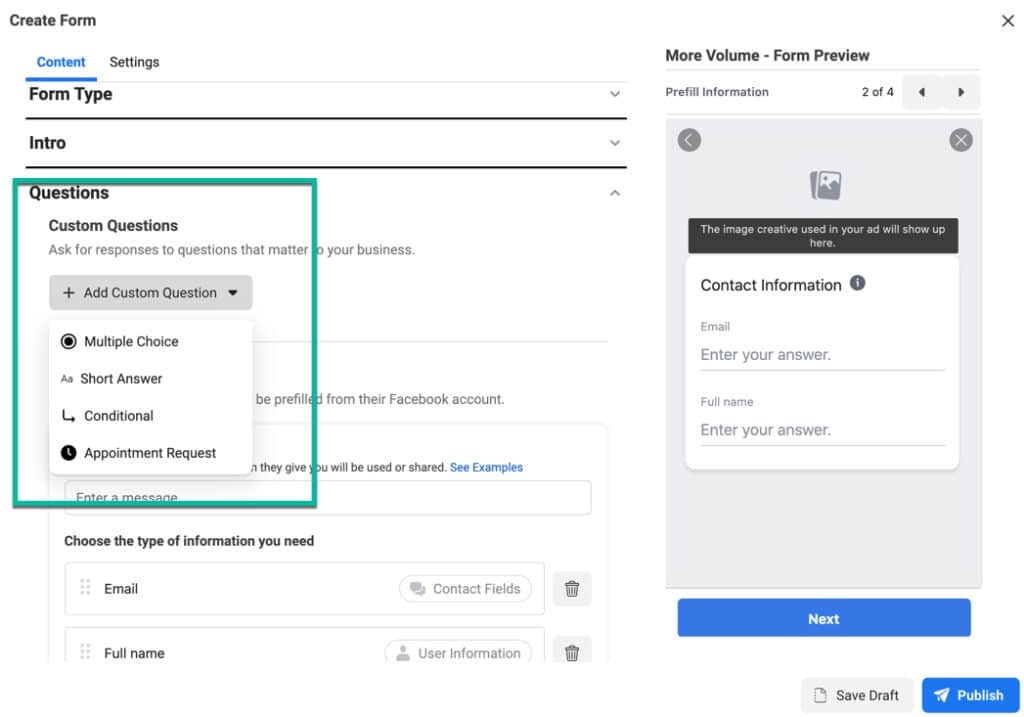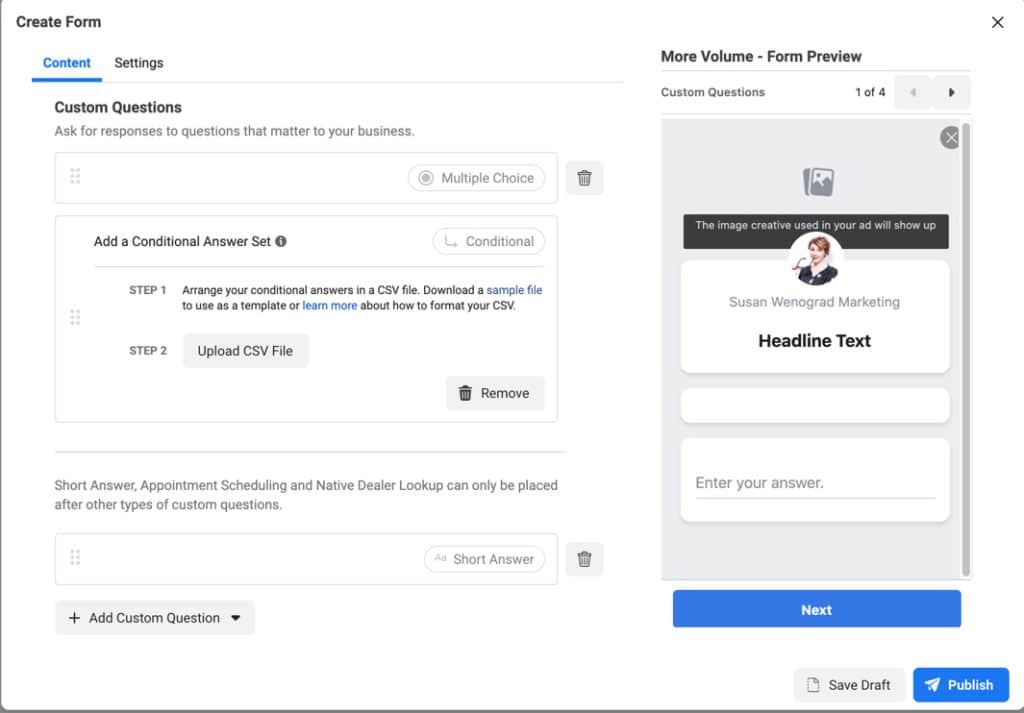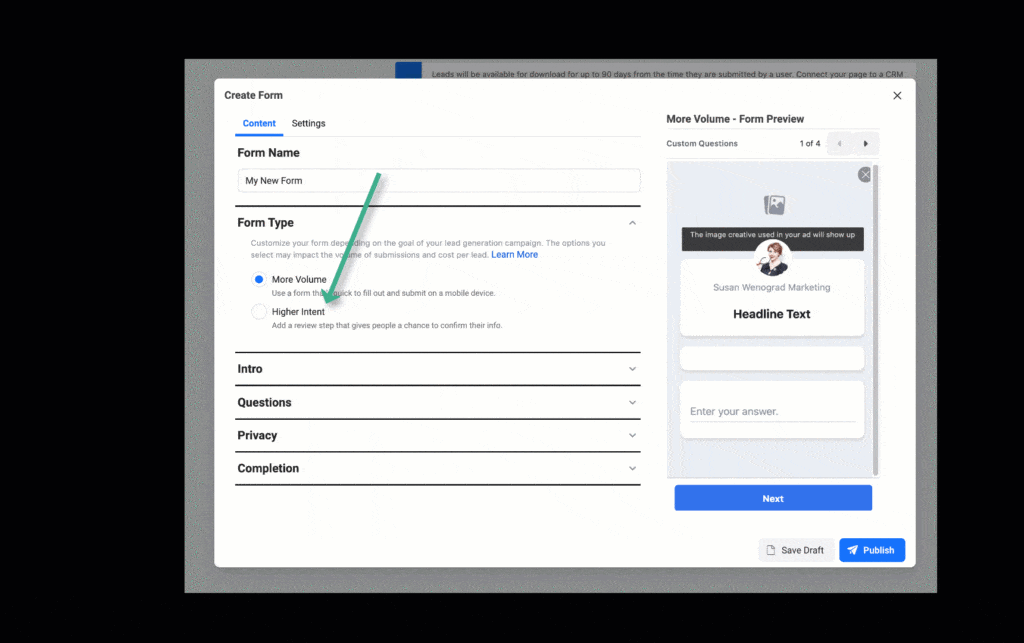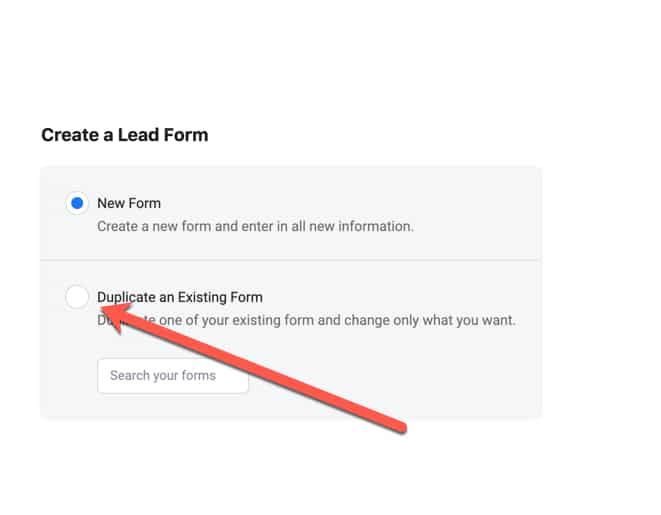One of the most common beefs I hear about Facebook Lead Ads is the quality isn’t there.
Brands that experience this typically have a few issues causing it. This doesn’t mean it’s a good fit for every brand – sometimes tactics are just a bust, but there are many cases where it doesn’t have to be.
Here are the top 3 ways to tighten up your lead ads on Facebook and get better results long-term.
Require Additional Information
The typical advice in the past was “the more fields, the worse the submission rate” for forms.
That was fine and dandy in the days where people paid pennies for a click on search, or Facebook was practically free. It didn’t matter how much waste there was because it was cheap to get.
My, how times have changed.
With Facebook ads white-hot competitive, and CPCs for industries shooting up to hundreds of dollars in some industries for paid search, we are now in a game of quality beating out quantity.
The frustration has been how to screen for better quality to make those higher costs worth it.
The easiest way is to require a bit more from your users.

Most brands look at this and automatically think, “Nope, don’t need additional information.”
But asking for additional information can help screen lead commitment to what you’re offering. It’s not information you have to use (though this doubles as a great way to do some market research), but it can dramatically increase your lead quality.
Yes, you get less submissions, which means each one costs more – but they’re also worth more!

Use the Higher Intent Option
There is also an option many brands glaze right over to have users confirm their information.
When setting up your Lead Ad forms, there’s an option to go for higher quantity (called “More Volume”), or higher intent. When you choose the intent option, an additional step appears where a user slides to confirm they want to submit their information.
Think of it like a double opt-in with email, only they’re doing it on the spot.

You can split test this by making one form with “More Volume,” and then using the “duplicate form” action to make a carbon copy of it.
Then just change the new one to “Higher Intent,” publish it, and get to testin’.

Be Ready to Lead Nurture
Something else I regularly encounter is a lack of system for email nurturing.
Typically, a brand has acquired the majority of their email subscribers through one or two avenues. (Organic search being a big one.)
When they expand into things like lead ads, they don’t account for the difference in who they’re talking to.
Here’s an example.
Who is Doing the Asking?
I get a fair amount of organic search visits for terms that have to do with Facebook Ads troubleshooting. A decent amount of these users started opting into my email list when they found a PDF I offered helpful and relevant.
I’d built trust, because I helped them solve a problem, and required nothing of them. If I offer them lessons or courses, the likelihood they’d buy is probably higher because they trust I’m not going for a cash grab – I actually give away a lot of what I’ve learned.
When you go and build our email to a cold audience, it’s a different story. In my previous example, the user came to me for help.
In advertising, it’s the reverse: you are going to them and offering it.
Those folks don’t know me. I have to proactively build that trust, and it takes longer, for many reasons: they’re bombarded by ads daily, I might not be speaking to a pain point they have today, etc.
In other words, they may be psychologically further out from needing me for anything.
The same goes for any brand – going higher-funnel means there are more factors outside your control.
Your Email Sequences
I could write a ton of blog posts on how that could and should be done, because there are many models and states of business that dictate that strategy.
However, the main lesson is: have a plan.
Don’t expect to get a lead form fill-out, and have them convert as fast as someone that comes through some other avenue like organic search.
You went to them, not the other way around.
Your job at that point is to convince them why they should come to your brand. It’s a longer-term discussion. Be fair to the mediums where you get your emails, and only hold them to a standard that’s reasonable.
Your Lead Ads won’t convert to sales like organic or paid search users will. Trying to judge them the same way is a path to frustration.
Instead, learn what the benchmarks are for your Lead Ads.
Treat Lead Ad Audiences Separately
Have those emails write to a separate list. Create a separate welcome and on-boarding sequences for them to understand their needs and what they respond to.
Analyze them with different eyes than you would other audiences, because they are!
Creating a better outcome for your Facebook Lead Ads means realizing they aren’t a silver bullet. They are a tool to help you get where you want to go, but their path will look very different than what you’ve been used to on email capture.
You must focus on quality over quantity in the emails you get, but the onus for quality is also on you: serve your audiences correctly, evaluate their results based on where the users came from, and adapt accordingly.
Your results will reflect the effort over time!
Interested in the basics of Lead Ads? My new course, The Persistent List, is releasing in a few weeks, and will take you through how to start with Facebook Lead Ads, step by step!
Drop your email in there to get the updates on the launch!

